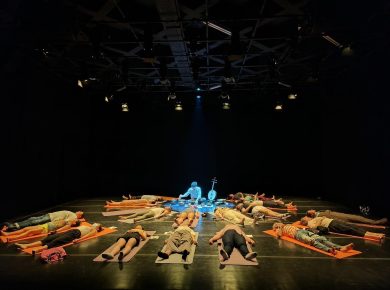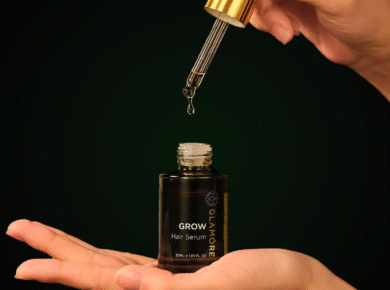The phrase “No pain, no gain” has echoed through gyms for decades, but in reality, this mindset can be more harmful than helpful. While discomfort can sometimes signal progress, pain is often the body’s way of indicating that something is wrong. Ignoring it can lead to injuries, longer recovery times, and even chronic issues.
For those beginning their fitness journey later in life, this mentality is especially dangerous. Training smart, rather than pushing through pain, is essential to aging gracefully and staying injury-free. Instead of focusing on intensity, the key is consistency, proper technique, and gradual progression. Organisations such as IFPA Singapore help guide individuals to train wisely, and companies like Carbyne Fitness offer accessible tools that support safe and sustainable fitness routines.
Discomfort vs. Damage: Understanding the Difference
It’s important to learn the difference between the normal discomfort of working muscles and the sharp pain that could signal injury. Mild muscle fatigue or slight soreness after a workout is common and often beneficial. However, sharp joint pain, stabbing sensations, or soreness that lingers for days should never be ignored.
Progress comes from balancing challenge and recovery, not from pushing through pain. By listening to the body’s signals and respecting its limits, anyone can avoid injuries and see consistent progress.

Why do Many Start Fitness Later in Life?
Many people don’t consider exercise until later in life, often in their 40s, 50s, or beyond. Whether motivated by a desire to improve health, mobility, or longevity, starting a fitness routine later in life presents unique challenges, such as:
- Reduced muscle mass and bone density
- Slower recovery times
- Managing pre-existing conditions or past injuries
However, it’s never too late to get stronger, healthier, and more mobile. Fitness experts, including those certified by IFPA Singapore, can help individuals design personalised routines tailored to their needs. Additionally, Carbyne Fitness offers equipment and resources to help individuals create effective home-based workouts, providing confidence and flexibility for beginners.
Injury Prevention: Smart Strategies for Late Beginners
Starting fitness later in life doesn’t mean you need to push through pain or unrealistic goals. Here are practical tips to safely ease into an active lifestyle:
- Warm Up Properly
A proper warm-up is crucial for preparing the body and reducing strain. A few minutes of mobility drills or light cardio can make a significant difference in reducing injury risk. - Prioritise Technique Over Weight
Mastering proper form is far more important than lifting heavy weights. Focusing on technique ensures that you protect your joints and muscles, making your workout more effective and safer. - Gradually Increase Intensity
Rushing progress is a recipe for injury. Increase the weight or duration of your exercises gradually to ensure steady improvement without overloading your body. - Train Strength and Balance
Strength training is essential for maintaining muscle and bone health, while balance exercises can reduce the risk of falls, especially as we age. - Rest and Recovery
Muscles grow and adapt during rest, not while working out. Ensure that you get adequate sleep, hydration, and rest days to allow your body to recover and rebuild stronger.
Fitness for Longevity, Not Just Intensity
The ultimate goal of exercise should shift from short-term results to long-term vitality. Fitness isn’t about punishing the body. It’s crucial to building resilience, confidence, and independence as we age. For those starting later in life, focusing on longevity is key to maintaining a sustainable fitness routine.
Incorporating strength, mobility, cardio, and recovery into your routine will lay the foundation for lifelong health.
 The author working with his trainers
The author working with his trainers
The Role of Professional Guidance in Fitness
Starting a new fitness routine can be overwhelming, especially for beginners. Professional guidance can make all the difference, and certified trainers from organisations like IFPA Singapore can help design personalised programs based on individual goals, health conditions, and fitness levels.
By working with experienced trainers, beginners can ensure they’re practicing safe, effective exercises that align with their unique needs, making fitness a sustainable and enjoyable part of their lifestyle.
Confidence Through the Right Tools
For many, traditional gyms can be intimidating, especially when starting out. Home-based fitness, using tools like dumbbells, kettlebells, and resistance bands, can provide a more accessible option for building strength and confidence at your own pace.
Look for companies that offer quality home gym tools, ensuring that individuals can work out effectively from the comfort of their own homes. While having the right equipment is important, success ultimately comes from consistent, mindful practice. It’s not about having the most advanced tools, but about using what you have to stay dedicated to the process.
Fitness at Any Age
Age should never be a barrier to staying active and fit. The key lies in training smart. Listening to your body, progressing gradually, and focusing on long-term health.
With safe practices, professional guidance, and the right tools, anyone, no matter their age, can prevent injuries, remain active, and age gracefully.
Contributed by Brian Chang, founder of Carbyne Fitness and IFPA Singapore.
Images: Carbyne Fitness










